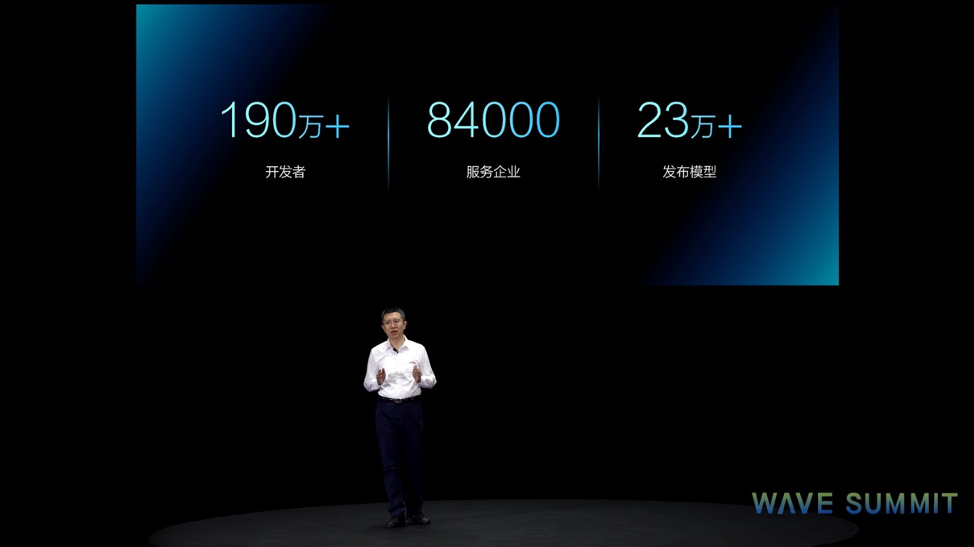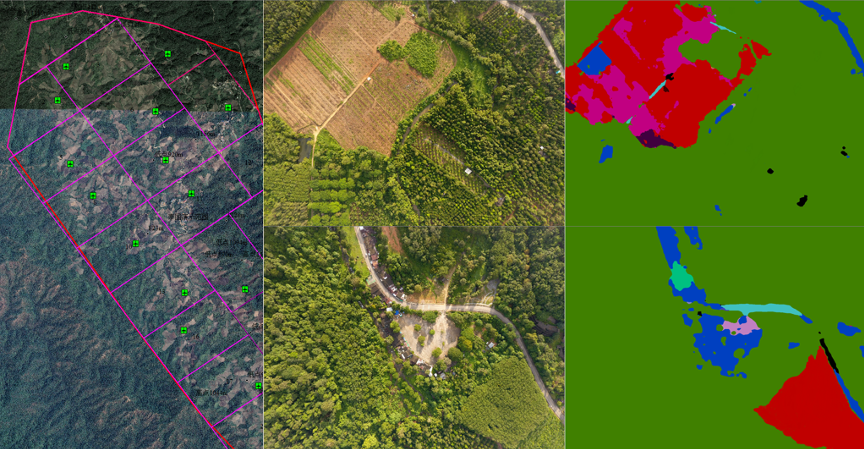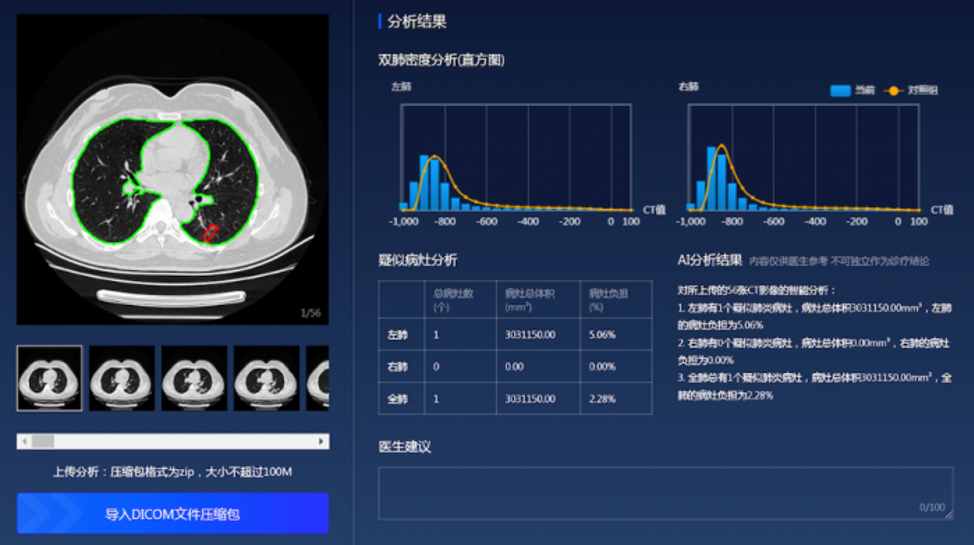Baidu’s deep-learning platform fuels the rise of industrial AI
AI is driving industrial transformation across a variety of sectors, and we're just beginning to scratch the surface of AI capabilities. Some industrial innovations are barely noticed, such as forest inspection for fire hazards and prevention, but the benefits of AI when coupled with deep learning have a wide-ranging impact. In Southeast Asia, AI-powered forest drones have helped 155 forestry bureaus expand the range of forest inspections from 40% to 100% and perform up to 200% more efficiently than manual inspections.
Behind these smart drones are well-trained deep-learning models based on Baidu's PaddlePaddle, the first open-source deep-learning platform in China. Like mainstream AI frameworks such as Google's TensorFlow and Facebook's PyTorch, PaddlePaddle, which was open sourced in 2016, provides software developers of all skill levels with the tools, services, and resources they need to rapidly adopt and implement deep learning at scale.
PaddlePaddle is being used by more than 1.9 million developers and 84,000 enterprises globally. Industries throughout China are using the platform to create specialized applications for their sectors, from the automotive industry's acceleration of autonomous vehicles to the health-care industry's applications for fighting covid-19.
Indeed, the coronavirus pandemic, which has spread over 150 countries and caused a worldwide economic shock, is increasing demands for AI transformation. Now is an unprecedented opportunity for the development of PaddlePaddle given the rise of industrial intelligence and the acceleration of AI-powered infrastructure," says Haifeng Wang, chief technology officer at Baidu. We will continue to embrace the open-source spirit, driving technological innovation, partnering with developers to advance deep-learning and AI technologies, and speeding up the process of industrial intelligence."
 At the recent Baidu Deep Learning Developer Conference Wave Summit 2020, Chief Technology Officer Haifeng Wang announced PaddlePaddle's collaboration in a hardware ecosystem that includes leading global tech companies such as Intel, NVIDIA, Arm China, and Huawei.How PaddlePaddle trained garbage-sorting robots
At the recent Baidu Deep Learning Developer Conference Wave Summit 2020, Chief Technology Officer Haifeng Wang announced PaddlePaddle's collaboration in a hardware ecosystem that includes leading global tech companies such as Intel, NVIDIA, Arm China, and Huawei.How PaddlePaddle trained garbage-sorting robotsDeep-learning technologies create opportunities for revamping operations, workload management, and productivity, even in traditional industries such as manufacturing, forestry, energy, and waste management. For example, in waste management, AI is transforming refuse picking, sorting, and recycling, supporting efforts to conserve natural resources, reduce carbon emissions, and lessen waste going into landfill sites. According to a World Bank report, more than 2 billion tons of municipal solid waste are produced in the world each year. Collecting it and separating it exposes waste pickers to any number of risk factors and hazards, making this a critical area for the development of innovative AI technologies.
In Europe and the US, computer-vision technology has been extensively used for detecting different types of waste, such as glass, plastic, and cardboard, to make waste sorting more efficient. But the task is not as efficient in all countries.
Using traditional computer-vision models in China would be useless," says Zhiwen Zhang, CEO of Jinlu Technology. The garbage in China is not compatible with what can be detected by this technology. Complications tend to arise with the detection quality and with identifying diverse garbage," says Zhang.
A computer-vision veteran, Zhang was eyeing PaddlePaddle to develop applications for improving waste sorting in China. Although the industry lacks the expertise of deep learning, with PaddlePaddle, developers don't necessarily have to be deep-learning experts or build things like data-processing models from scratch.
Jinlu Technology uses a garbage-sorting robot programmed with an object-detection model to identify different types of garbage. It also uses an image-segmentation model to find garbage and do things like detect the edge of a bottle and determine its center point. The model takes just half a second to recognize an image.
For plastic bottles, Jinlu Technology trains an instance-segmentation model using Paddle Detection, a PaddlePaddle toolkit for image processing. The model predicts on Edgeboard (PaddlePaddle's edge computing development platform) through Paddle Lite, PaddlePaddle's deep-learning framework tailored for lightweight models, and sends signals to robotic arms that classify the garbage. While traditional algorithm-accuracy screening stays between 60% and 90%, depending on the quality of the garbage, deep-learning algorithms deliver an accuracy of 93% to 99%.
 Jinlu Technology trains an image-segmentation model using Paddle Detection, a PaddlePaddle toolkit for image processing, to identify plastic bottles-in an effort to make waste sorting more efficient.
Jinlu Technology trains an image-segmentation model using Paddle Detection, a PaddlePaddle toolkit for image processing, to identify plastic bottles-in an effort to make waste sorting more efficient.Using AI in waste management promises further potential. AI can not only spare human labor by 96%, but it can also refine sorting and further identify waste that can be difficult to categorize, such as large pieces of organic matter, small pieces of metal, and other particles. Not to mention, AI can self-learn to optimize the pipeline," says Zhang.
Major features and innovations of PaddlePaddleCurrently, PaddlePaddle offers 146 algorithms and has advanced more than 200 pretraining models, some of them with open-source codes to facilitate the rapid development of industrial applications. The platform also hosts toolkits for cutting-edge research purposes, like Paddle Quantum for quantum-computing models and Paddle Graph Learning for graph-learning models.
PaddlePaddle facilitates AI development while lowering the technical burden for users, using a programmable scheme to architect the neural networks. It supports declarative and imperative programming with development flexibility-so can develop software with different types of requirements-all while preserving a high runtime performance. Algorithms can automatically design neural architectures that offer better performance than those developed by human experts.
 In southeast Asia, AI-powered forest drones have helped 155 forestry bureaus expand the range of forest inspections from 40% to 100% and perform up to 200% more efficiently than manual inspections.
In southeast Asia, AI-powered forest drones have helped 155 forestry bureaus expand the range of forest inspections from 40% to 100% and perform up to 200% more efficiently than manual inspections.PaddlePaddle has also made breakthroughs in ultra-large-scale deep neural networks training. Its platform, the first in the world of its kind, supports the training of deep neural networks with more than 100 billion features and trillions of parameters using data sources distributed over hundreds of nodes. One of the beneficiaries is Oppo, a smartphone producer in China, which uses PaddlePaddle to boost the training efficiency of its recommendation system by 80%.
Not only is PaddlePaddle compatible with other open-source frameworks for model training, it also accelerates the inference of deep neural networks for a variety of processors and hardware platforms. At the recent Baidu Deep Learning Developer Conference Wave Summit 2020, PaddlePaddle announced its collaboration in a hardware ecosystem that includes leading global tech companies such as Intel, NVIDIA, Arm China, Huawei, MediaTek, Cambricon, Inspur, and Sugon.
PaddlePaddle still has room for improvement, says Baidu's corporate vice president Tian Wu. In the future, PaddlePaddle will keep advancing large-scale distributed computing and heterogeneous computing, providing the most powerful production platform and infrastructure for developers to accelerate the development of intelligent industries."
PaddlePaddle's role in the fight against covid-19One of the industrial applications developed from PaddlePaddle is currently in use for medical purposes to combat covid-19. The primary diagnostic tool for pneumonia, one of the severe effects of covid-19, is a chest computed-tomography (CT) scan. With limited front-line doctors and resources to read an exponentially growing number of scans quickly and accurately, CT imaging technology is crucial to helping clinicians detect and monitor infections more effectively.
LinkingMed, a Beijing-based oncology data platform and medical data analysis company, released China's first open-source AI model for pneumonia CT image analysis, powered by PaddlePaddle. The AI model can quickly detect and identify pneumonic lesions while providing a quantitative assessment for diagnosis information, including the number, volume, and proportion of pneumonic lesions.
By using PaddlePaddle and its semantic segmentation toolkit PaddleSeg, LinkingMed has developed an AI-powered pneumonia screening and lesion-detection system being used in the hospital affiliated with Xiangnan University in Hunan Province. The system can pinpoint the disease in less than one minute with a detection accuracy of 92% and a recall rate of 97% on test data sets.
 In health care, the PaddlePaddle platform is being used to build applications to fight covid-19.
In health care, the PaddlePaddle platform is being used to build applications to fight covid-19.Robust AI will be needed to manage the increasingly complex tasks required for technological growth. Baidu is committed to developing the PaddlePaddle deep-learning platform along with AI researchers to create a better future. We're thrilled to see what we've accomplished in 2020 and look forward to new breakthroughs in the future.